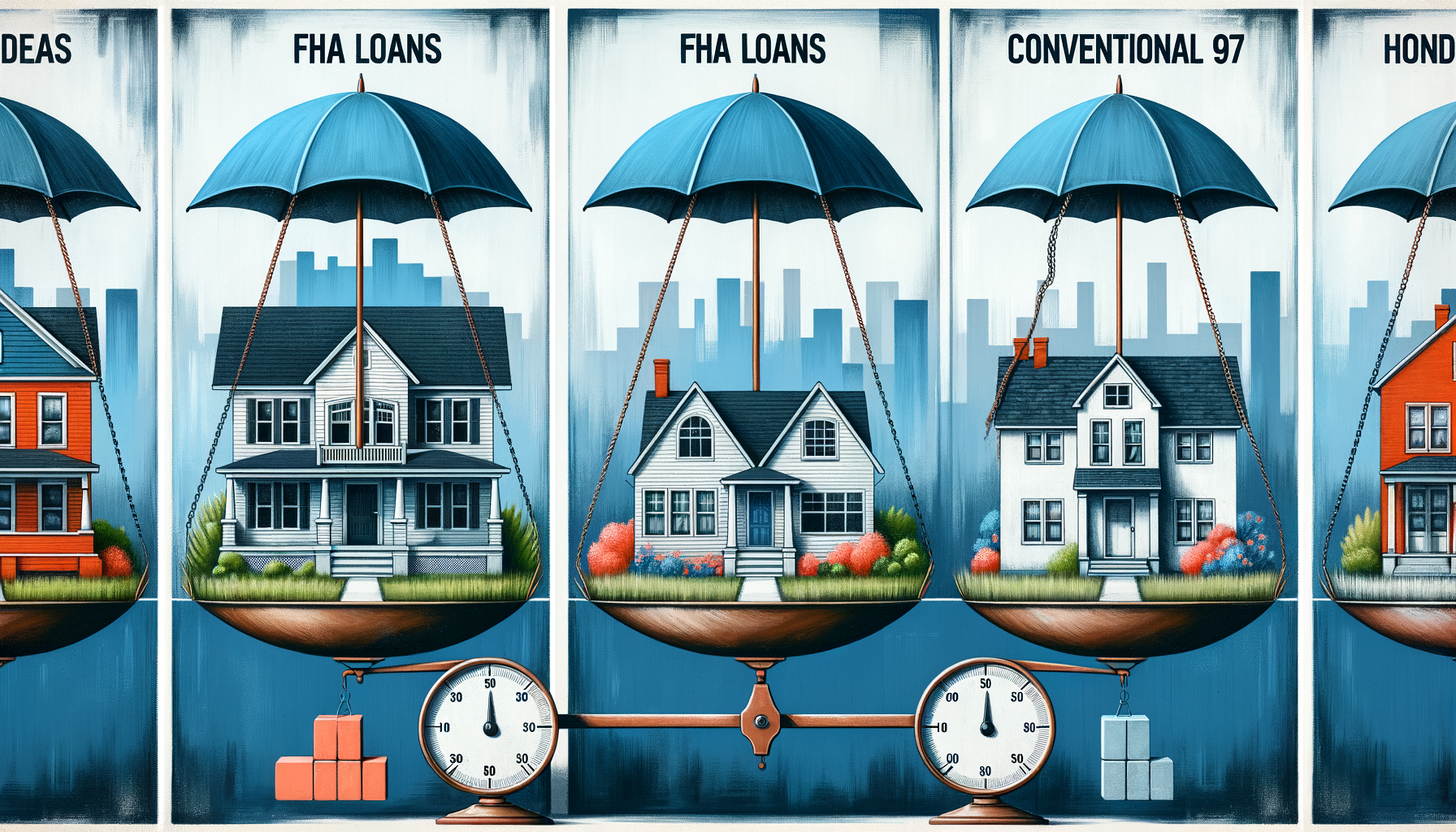“Comparing 5% Down Fannie Mae Loans with FHA Loans: A Comprehensive Guide for Real Estate Investment”

There’s no doubt that home financing is a crucial aspect for most people planning to invest in real estate. In particular, mortgage loans play a central role in facilitating property investment for many Americans. Within the wide spectrum of mortgage loans, two options stand out: the FHA loan and the Fannie Mae’s 5% down payment loan. Let’s spotlight each loan, providing an informative yet simplistic exploration of their similarities, differences, benefits, and drawbacks.
To start with, the Federal Housing Administration (FHA) loan is unique due to government backing, making it a loan safeguarded by the U.S. government. With this loan, lenders are undeterred by defaults as the FHA guarantees loan repayment. This security feature has sparked a great deal of attractiveness, welcoming particularly first-time homebuyers who may not have a stellar credit history or an extensive down payment.
On the flip side, we have Fannie Mae’s 5% down payment loan, better known as the “Conventional 97.” Introduced by Fannie Mae, a government-sponsored enterprise, this loan has been wedge-shaped to cater to individuals who can afford a small down payment, at least 3% of the home’s value, but still seek a conventional loan.
Now, you might wonder, what’s the deal with these two loans? Which is a better choice? To identify the right loan for you, you have to delve deeper into each loan’s particulars, establishing which one suits your situation best.
Understanding FHA Loans:
FHA loans are typically designated for those with low-to-moderate income. They extend a helping hand to home buyers who have a hard time gathering a substantial down payment, safeguarding your journey into homeownership. An FHA loan generally requires a 3.5% down payment, favorably low compared to the average requirement of 20% by conventional mortgage lenders. Plus, these loans are known for their flexible qualification terms.
Though FHA loans have an attractive appeal, they come with caveats. To begin with, all FHA loans oblige borrowers to pay for a mortgage insurance premium (MIP). This insurance directly protects the lender if a borrower defaults. The MIP comprises an upfront premium that’s 1.75% of your loan amount, coupled with an annual premium that ranges from 0.45% to 1.05% of the average outstanding balance. Importantly, this premium is incorporated into your monthly payment.
Further, FHA loans require property inspections to confirm that the property meets the Department of Housing and Urban Development’s minimum property requirements. These requirements might exclude homes in need of significant repairs or rehabilitation, which could limit some real estate investment opportunities.
Shedding Light on the Conventional 97 Loan:
Moving onto the Conventional 97 loan, this program is Fannie Mae’s response to FHA loans. This loan is tailored toward homebuyers who are not able to save a substantial amount for a down payment but have a reliable credit score and steady income. Here, the minimum down payment is only 3% of the home’s price, making it a feasible choice for many.
The Conventional 97 loan also offers reductions in private mortgage insurance (PMI) when compared with FHA loans. It’s important to note that while both PMI and MIP serve the same purpose, PMI is linked with conventional loans and titled differently. Plus, with the Conventional 97 loan, once equity reaches 20%, PMI can be shed, unlike the FHA loan where MIP continually exists.
However, the Conventional 97 loan does have its requirements. For instance, only fixed-rate mortgages qualify for this program. Besides, the funding loan limit aligns with the conventional loan limit, set at $510,400 for most areas.
Comparing FHA Loans to the Conventional 97 Loan:
When weighing both options, it’s essential to consider the differences that may influence your decision. For example, while both loans allow for low down payments, the FHA requires a slightly higher down payment of 3.5%, compared to the Conventional 97’s 3%.
When it comes to credit score requirements, FHA loans tend to be more lenient. Pioneered for low-to-moderate-income earners, the FHA requires a minimum credit score of 500. In contrast, the Conventional 97 loan is more stringent, requiring a minimum credit score of 620.
Mortgage insurance is another distinguishing factor. As mentioned, the FHA loan requires an MIP, which lasts for the life of the loan. Alternatively, the Conventional 97 loan’s PMI can be terminated when you reach 20% equity, offering a potential cost-saving in the long run.
As you ponder these factors, keep in mind your personal circumstance, financial standing, and long-term goals. Each loan has its unique set of requirements, advantages, and disadvantages. Moreover, beyond just understanding these loan specifications, seeking guidance from financial advisors and veteran investors can be beneficial.
In a nutshell, no matter whether you lean towards the government-backed FHA or Fannie Mae’s Conventional 97, the most ideal choice is the one well-suited to your financial position and homeownership dreams. Home financing, notably a mortgage loan, is a significant commitment spanning years, if not decades, so it’s critical to make a well-informed decision. Be sure to dive deep into the details, assess your financial standing, scrutinize your property aspirations, and consider all available mortgage platforms before making a choice. After all, knowledge is the stepping stone towards successful, sustainable real estate investment.
